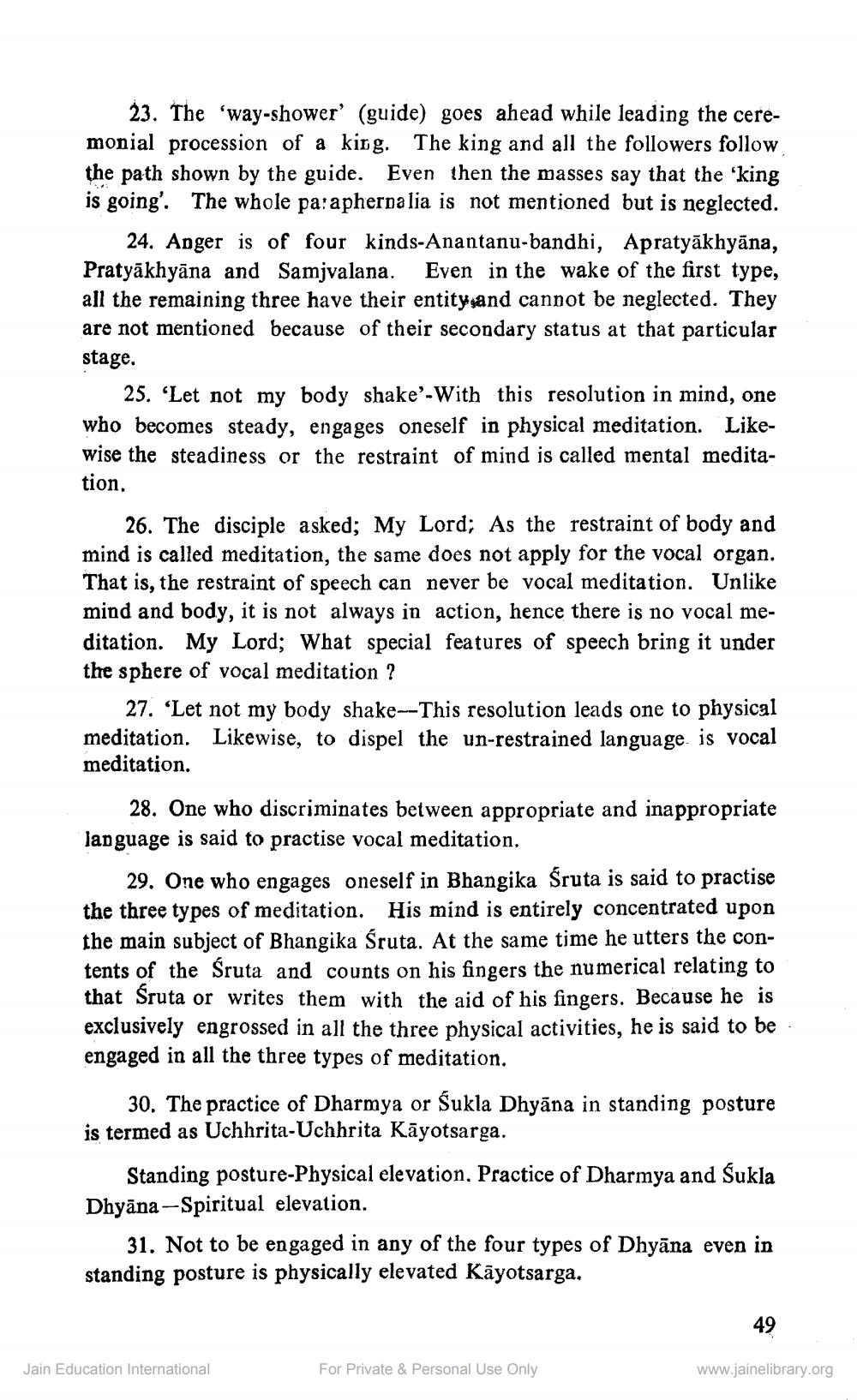________________
23. The 'way-shower' (guide) goes ahead while leading the ceremonial procession of a king. The king and all the followers follow the path shown by the guide. Even then the masses say that the 'king is going'. The whole paraphernalia is not mentioned but is neglected.
24. Anger is of four kinds-Anantanu-bandhi, Apratyākhyāna, Pratyākhyāna and Samjvalana. Even in the wake of the first type, all the remaining three have their entity and cannot be neglected. They are not mentioned because of their secondary status at that particular stage.
25. 'Let not my body shake’-With this resolution in mind, one who becomes steady, engages oneself in physical meditation. Likewise the steadiness or the restraint of mind is called mental meditation.
26. The disciple asked; My Lord; As the restraint of body and mind is called meditation, the same does not apply for the vocal organ. That is, the restraint of speech can never be vocal meditation. Unlike mind and body, it is not always in action, hence there is no vocal meditation. My Lord; What special features of speech bring it under the sphere of vocal meditation ?
27. 'Let not my body shake--This resolution leads one to physical meditation. Likewise, to dispel the un-restrained language is vocal meditation.
28. One who discriminates between appropriate and inappropriate language is said to practise vocal meditation.
29. One who engages oneself in Bhangika Sruta is said to practise the three types of meditation. His mind is entirely concentrated upon the main subject of Bhangika Śruta. At the same time he utters the contents of the Śruta and counts on his fingers the numerical relating to that Śruta or writes them with the aid of his fingers. Because he is exclusively engrossed in all the three physical activities, he is said to be engaged in all the three types of meditation.
30. The practice of Dharmya or Sukla Dhyāna in standing posture is termed as Uchhrita-Uchhrita Kāyotsarga.
Standing posture-Physical elevation. Practice of Dharmya and Sukla Dhyāna-Spiritual elevation.
31. Not to be engaged in any of the four types of Dhyāna even in standing posture is physically elevated Kāyotsarga.
Jain Education International
For Private & Personal Use Only
www.jainelibrary.org




